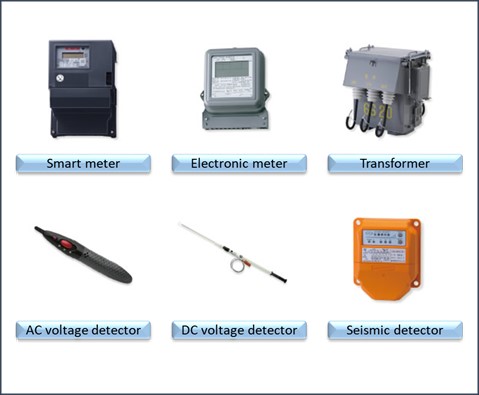CHUBUSEIKI Co., Ltd. Electrical machinery and equipment manufacturingFactory-ONE MF (MRP)

Founded in 1951 as an affiliated company of Chubu Electric Power, CHUBUSEIKI is engaged in the manufacturing, selling and repair of electric meters, voltage detectors, seismic detectors, etc. by utilizing the technology and experience acquired over more than 60 years. The company is also developing smart meter that has a communication function and which is one of the key devices of the power grid "smart grid", monitoring and operating the entire system including communication, and supporting efficient electricity use. CHUBUSEIKI is also working on new services such as "visualization" of usage status.
Background of the implementation of the new system
The company was using a built-in production management system since 2005, but at the time, there were business tasks such as:
1) Despite entering the daily work report, the actual cost including labor costs has not been grasped and analyzed properly.
2) The existing system did not include inventory management.
When considering the implementation of a new system, the main product, the watt-hour meter, was just released before the transition from the conventional disk-rotating meter to a smart meter that also has a communication function, and the price competition of smart meters was more intense compared with a conventional watt-hour meter. Therefore, the company had to cut costs. In order to deliver high quality and low price electricity meters to the customers, CHUBUSEIKI conducted cost analysis and considered introducing a new manufacturing management system.
System selection criteria
The company considered about 3 other companies' package software and ultimately they decided to select Factory-ONE because it was possible to customize the software.
The implementation process up to Go-live
The road to operation was quite challenging. We talked to almost everyone, from the group leader class to the people in charge, and determined all the issues and problems. There were various requests from each department regarding the new system, from small ones to those that could be very difficult to realize, and since there was no coordinator for manufacturing management, it took a considerable amount of time to sort out and solidify the definition of requirements. Our representative created a task management table, and checked off all the tasks one after another.
If the target range managed by the system is small, later maintenance will be easier, so customization was suppressed as much as possible, and the input environment was improved through adding extra service functions without changing the system itself, thus, making it easier for the person in charge to use the system. When creating a business operations flow, we gained the understanding of the internal processes of the company by clearly dividing the business operations flow into "target business operations," "additional service functions," "customization," and "non-target business operations that will not be included in the system."
Even so, since the new system has a wide range of targets such as order receipt, order placement, inventory, and shipping, and many other input items, requests started to come from each department such as "the operation was simpler before", " we would like simpler operations" and so on. Through teaching and explaining how to operate the system to each department, workers in charge learned how to operate the system effectively.
After the test was completed and the pilot operation started, the operational issues came up. Inventory actually changes along with the manufacturing management system, but problems occurred in parts that had been unclear due to the connection of each department, such as the delivery of slips, the timing of input to the system, and inventory. Since it was difficult to coordinate between the departments, we entered into arbitration of various cases and decided the rules.
At the end of the day, we managed to build a customized manufacturing management system that would benefit the business operations and business analysis of the company.
Benefits of implementation
Compared to the conventional system, the newly implemented system enabled to grasp the processes from order receipt to sales recording and also improved these processes. In addition, in terms of cost understanding, which was the main purpose of the implementation, the company got the clear image of manufacturing overhead cost generation by integrating Factory-ONE with the daily work report and the accounting system. Now CHUBUSEIKI understands and analyzes the cost of products in more detail than before.
In addition, after implementing Factory-ONE which also includes inventory management system, each department was able to monitor and grasp the inventory in real time, and thus, were able to change their awareness of inventory.
In the future, the company plans to consider implementing EDI service to further reduce costs while optimizing the entire supply chain management.
Main products
